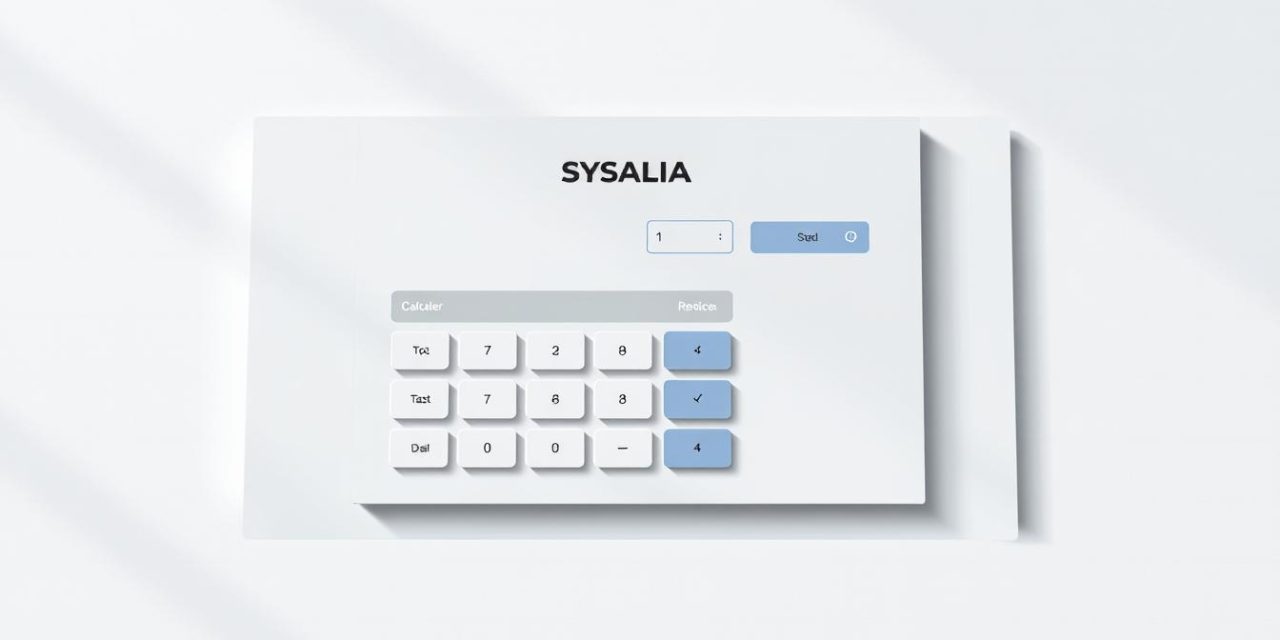Going independent offers incredible earning potential—top professionals make 2-5 times corporate salaries. But with taxes, expenses, and market competition, setting the right price can feel overwhelming.
Many freelancers struggle with financial complexities. In France, for example, nearly 25% of revenue goes to taxes and social charges. Specialization, like an Ionic/Cordova developer charging €700/day, proves that strategic pricing unlocks growth.
Our guide helps you balance income goals, market rates, and value perception. Whether funding business expansion or building your audience, the right approach ensures stability in your career.
Table of Contents
Key Takeaways
- Top earners account for business costs and expertise when setting rates.
- Taxes and social charges average 25% of freelance revenue in France.
- Specialization increases earning potential significantly.
- Strategic pricing supports long-term business growth.
- Understanding portage salarial legislation is crucial for compliance.
Understanding Freelance Rates: Why Pricing Matters
Your rate reflects more than just time—it communicates value, trust, and professionalism. A €560/day fee positions you as an expert, while €300/day might attract budget-focused clients. Perception drives decisions: 68% of clients link higher rates with superior skills.
Small rate differences create big financial gaps. Charging €100 more per day adds €18,000 annually. Yet, 70% of independents underprice initially, fearing lost opportunities. This false economy backfires—23% face client attrition when correcting rates later.
Market dynamics vary wildly. Platforms like Upwork skew toward lower bids, while specialized networks like Malt reward niche expertise. Your activité thrives when pricing aligns with your marché’s expectations.
« Pricing isn’t just about covering costs—it’s the fuel for reinvestment in skills and tools that keep you competitive. »
Strategic rates let you:
- Invest in certifications or premium tools.
- Reduce burnout by working fewer, higher-value projects.
- Attract clients who prioritize quality over cost.
Underpricing traps you in a cycle of overwork and undervaluation. Set rates that reflect your worth—and watch your business grow sustainably.
Common Pitfalls When Setting Freelance Rates

Setting the right price for your services is crucial for long-term success. Many professionals stumble into avoidable traps that limit their earning potential. Recognizing these mistakes early helps you build a sustainable business.
Overestimating Your Monthly Revenue
Dreaming of €4,000/month? Reality hits when taxes and unpaid hours shrink that number. Studies show administrative tasks eat 30% of billable time, leaving only 70% for actual work.
After France’s 25% tax impact, that €4,000 becomes €2,100. Smart freelancers plan for these gaps by setting rates that cover both productive and non-productive hours.
Fear of Charging Too Much
82% of clients expect rate negotiations, yet many freelancers hesitate to ask for fair compensation. Underpricing attracts budget clients who often demand more for less.
Paul, an Ionic developer, doubled his income by charging €700/day instead of €350. His specialized skills justified the higher price—and clients respected it.
Lack of Specialization
Generalists earn less than specialists. Data shows niche experts charge 2.3 times more than those offering broad services. Specialization builds authority and justifies premium pricing.
Focus on high-demand skills like IT development or financial consulting to maximize your earnings.
Hourly Pricing Traps
Charging €80/hour for a website redesign? That’s €3,200 for 40 hours. Value-based pricing at €5,000 for the same project earns you more while working smarter.
Hourly rates punish efficiency. Clients paying for results care less about your time and more about their outcomes.
« Specialization isn’t just about skills—it’s about positioning yourself as the obvious choice for specific client needs. »
Recovery strategies to avoid these pitfalls:
- Track all working hours to understand true costs
- Package services based on client outcomes, not time
- Develop niche expertise through certifications
- Adjust rates annually to match growing experience
Effective Methods to Determine Your Freelance Rates

Choosing the right pricing strategy can transform your business growth and client relationships. Unlike hourly billing, strategic methods align your income with expertise and market demand. Below, we explore three proven approaches to set confident rates.
Value Pricing Strategy
Value-based pricing focuses on client outcomes, not hours worked. Research shows it converts 40% better than hourly models. Follow this 4-step méthode:
- Define the client’s ROI—how your work impacts their revenue.
- Calculate your costs (tools, taxes, non-billable time).
- Quantify the project’s valeur to the client’s business.
- Set a price that reflects both your costs and their gains.
Example: A website redesign priced at €5,000 (vs. €80/hour) rewards efficiency and results.
The « Temps Modernes » Approach
This méthode ensures sustainability by doubling your minimum acceptable rate. The formula:
(Minimum Rate × 2) + Specialization Premium
If you need €200/day to cover expenses, charge €400 plus a premium for niche skills. Data shows this boosts earnings by 58% on average.
Benchmarking the Right Competitors
Analyze concurrence strategically—focus on specialists, not generalists. Use platforms like Malt to filter rates by:
- Industry (e.g., IT vs. marketing).
- Experience level (Crème de la Crème profiles).
- Project complexity.
Adjust your taux journalier based on where you fit in this landscape.
| Service Type | Generalist Rate | Niche Expert Rate |
|---|---|---|
| Web Development | €300/day | €700/day |
| Financial Consulting | €400/day | €900/day |
Pro Tip: Package services into tiers (Basic/Advanced/Deluxe) to cater to different budgets while protecting your valeur.
For a detailed breakdown, use our guide to calculate your daily rate with tax and expense considerations.
How to Calculate Your Freelance Rates
Calculating your rates with precision ensures financial stability and growth in your independent career. Your chiffre affaires depends on balancing costs, expertise, and market demand. Below, we break down a proven three-step method to set rates that sustain your business.
Step 1: Define Your Desired Income
Start with your net income goal. Remember, taxes and expenses consume roughly 40% of revenue in France. For a €50,000 target:
- Gross it up: €50,000 ÷ 0.75 = €66,667 (accounts for 25% taxes).
- Add 15% for tools, insurance, and non-billable heures.
- Divide by 15 billable jours/month: €66,667 ÷ 180 = €417/day.
This formula ensures you cover costs while hitting income targets.
Step 2: Choose Your Pricing Model
Compare structures to match your workflow:
| Model | Range | Best For |
|---|---|---|
| Hourly | €65–120 | Short tasks or uncertain scope |
| Daily | €400–700 | Multi-day projects |
Value-based pricing often outperforms both, like charging €5,000 for a website redesign. Learn strategies to charge €500/day in competitive niches.
Step 3: Adjust for Market and Experience
Apply multipliers based on your profile:
- Junior (0–2 years): 0.8x market rate.
- Mid-level (3–5 years): 1.2x.
- Expert (5+ years): 1.45x.
Specialization further boosts rates. Tech experts add 35%, while creatives gain 15%. Your taux journalier moyen should reflect this hierarchy.
« Rates aren’t static—annual reviews align them with growing skills and inflation. »
Practical Tips for Negotiating Freelance Rates
Mastering rate discussions builds confidence and ensures fair compensation for your expertise. Studies show professionals who negotiate effectively earn 22% more than those who accept initial offers. These strategies help you navigate négociations while maintaining strong client relationships.
Present Multiple Pricing Options
Tiered packages simplify decision-making for clients while increasing your close rate by 27%. Structure three service levels with clear value differentiation:
- Bronze: Core deliverables (€1,500)
- Silver: Core + 2 optimizations (€1,875, 25% premium)
- Gold: Full solution with priority support (€2,340, 56% premium)
This approach guides clients toward higher-value options naturally.
Quantify Your Impact
Transform abstract skills into measurable returns. Before négociations, prepare ROI calculators showing:
- How your €15,000 website redesign generates €45,000 in client revenue
- Time savings from your process automation (€28/hour × 200 hours/year)
Include case studies proving your value in similar missions.
Anticipate Negotiations
68% of buyers expect flexibility. Build these tactics into your pricing strategy:
- Add a 6% buffer (quote €530 for €500 target)
- Offer payment plans instead of discounts
- Bundle insurance coverage as value-add (« RC PRO included »)
Prepare script templates for common objections like « Your prix exceeds our budget. »
« Successful negotiators focus on mutual benefit—your expertise solves their problem at fair market value. »
Remember: Your rates reflect years of training and unique solutions. With these methods, you’ll secure missions that respect your worth and fuel business growth.
Leveraging Tools and Resources
Digital tools remove guesswork from financial planning and client management. The right plateformes and outils help you set competitive tjm while maintaining financial stability. Below are essential resources trusted by top professionals.
Specialized Platforms for Client Acquisition
Match your expertise with the right marketplace:
- Malt: Ideal for tech professionals with real-time rate calculators
- Crème de la Crème: Connects executives with premium projects
- CreativLink: Best for designers and creative specialists
These plateformes update tjm benchmarks quarterly, helping you stay competitive.
Financial Management Solutions
Irregular income requires smart tools:
| Tool | Key Benefit | Pricing |
|---|---|---|
| Finexkap Cash Solo | Cash flow forecasting | Free basic plan |
| QuickBooks Self-Employed | Tax-ready expense tracking | €10/month |
« Automating finances saves 8 hours monthly—time better spent on billable work. »
Essential Insurance Coverage
Protect your business with proper assurance:
- RC Pro: €150-300/month for professional liability
- Multirisque: Comprehensive business protection
Factor these costs into your tjm calculations for accurate pricing.
Rate Monitoring Resources
Stay informed with these tools:
- Glassdoor Freelance salary reports
- Talent.io industry benchmarks
Pair these with tax calculators for complete financial planning.
Conclusion: Setting Confident and Competitive Freelance Rates
Sustainable success hinges on three key pricing principles. Value perception, financial stability, and market alignment ensure your rates reflect your worth while attracting ideal clients.
Leverage your expertise like Paul did—specialization justifies premium pricing. Remember: Your rate = (Value + Costs) × Confidence. This formula turns uncertainty into clarity.
Schedule biannual reviews. Incremental 5–8% adjustments keep pace with growing skills and marché demands. Download our rate-setting checklist to start optimizing today.
Ready to refine your strategy? Join the LiveMentor community for ongoing support. Your next-level career begins with pricing that fuels growth.
FAQ
How do I determine my ideal freelance rate?
Start by calculating your desired annual income, then factor in expenses, taxes, and billable hours. Use value-based pricing or benchmark competitors for accuracy.
Should I charge hourly or per project?
Project-based pricing often works better for experienced professionals, while hourly rates suit tasks with uncertain timelines. Choose what aligns with your workflow.
How often should I adjust my rates?
Review pricing annually or when gaining significant expertise, new certifications, or increased demand for your services.
What’s the biggest mistake when setting rates?
Underestimating business costs like taxes, insurance, and unpaid time. Always account for these to maintain profitability.
How do I handle clients who say my rates are too high?
Highlight your unique value, share success metrics from past work, and offer flexible payment plans if appropriate.
What tools help calculate freelance rates?
Use online rate calculators, industry salary reports, and time-tracking apps to analyze your earning potential accurately.
How does specialization impact pricing?
Niche expertise commands higher rates. Specialized skills reduce competition and increase perceived value for clients.





